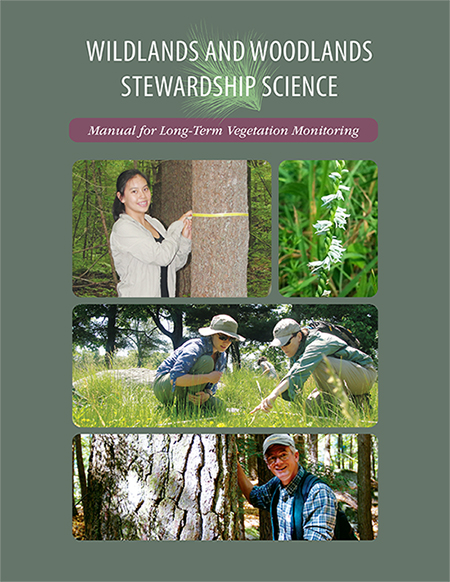Wildlands and Woodlands Stewardship Science is a forest and farmland monitoring research initiative specifically designed for the landowner of New England. The W&W Stewardship Science Manual and associated resources, provide a step-by-step approach to monitoring vegetation that landowners can use to track changes in their forests, fields, or shrublands over time. This program also connects people throughout the region through a “citizen-science” forest monitoring program effort that helps us understand New England’s changing vegetation.
Stewardship Science also connects people to a central database* so that they can be an integral part of a larger regional effort to understand our forests. Results from this “citizen-science” monitoring program can inform New England landowners about:
- Long-term changes in the composition, structure, and carbon storage of protected wildlands and woodlands
- Impacts and effectiveness of a variety of management objectives on forests and non-forest vegetation
- The response of forests to a range of natural disturbances
* The online database currently accepts only forest monitoring data.
Our Project Goals
- Create a straightforward, user-friendly approach that will inspire a diversity of landowners (e.g., land trusts, conservation commissions, academic institutions, foresters, teachers) to engage in systematic data collection on conserved forestlands, farmlands, and other woodland vegetation.
- Connect forest practitioners and conservation groups to a shared online database that can broaden understanding, inspire collaborations, and inform management decisions locally and across the region.
Become a Stewardship Science Regional Representative
If you are an ecologist, forester, naturalist (or similarly knowledgeable), you can become a regional representative to assist other study participants. Duties are flexible depending on your preference, but can include:
- Answering e-mails for project questions
- Assisting study participant with field methodology.
- Some travel to a new project for on-site assistance
This can be a particularly fruitful project for an academic institution that would like to be part of meaningful, local conservation and to set-up projects for students over time.
Contact Information
Highstead coordinates W&W Stewardship Science in collaboration with scientists from the Harvard Forest, Brandeis University, the University of Minnesota, and the University of Massachusetts. For more information, contact Highstead Ecologist Ed Faison.

